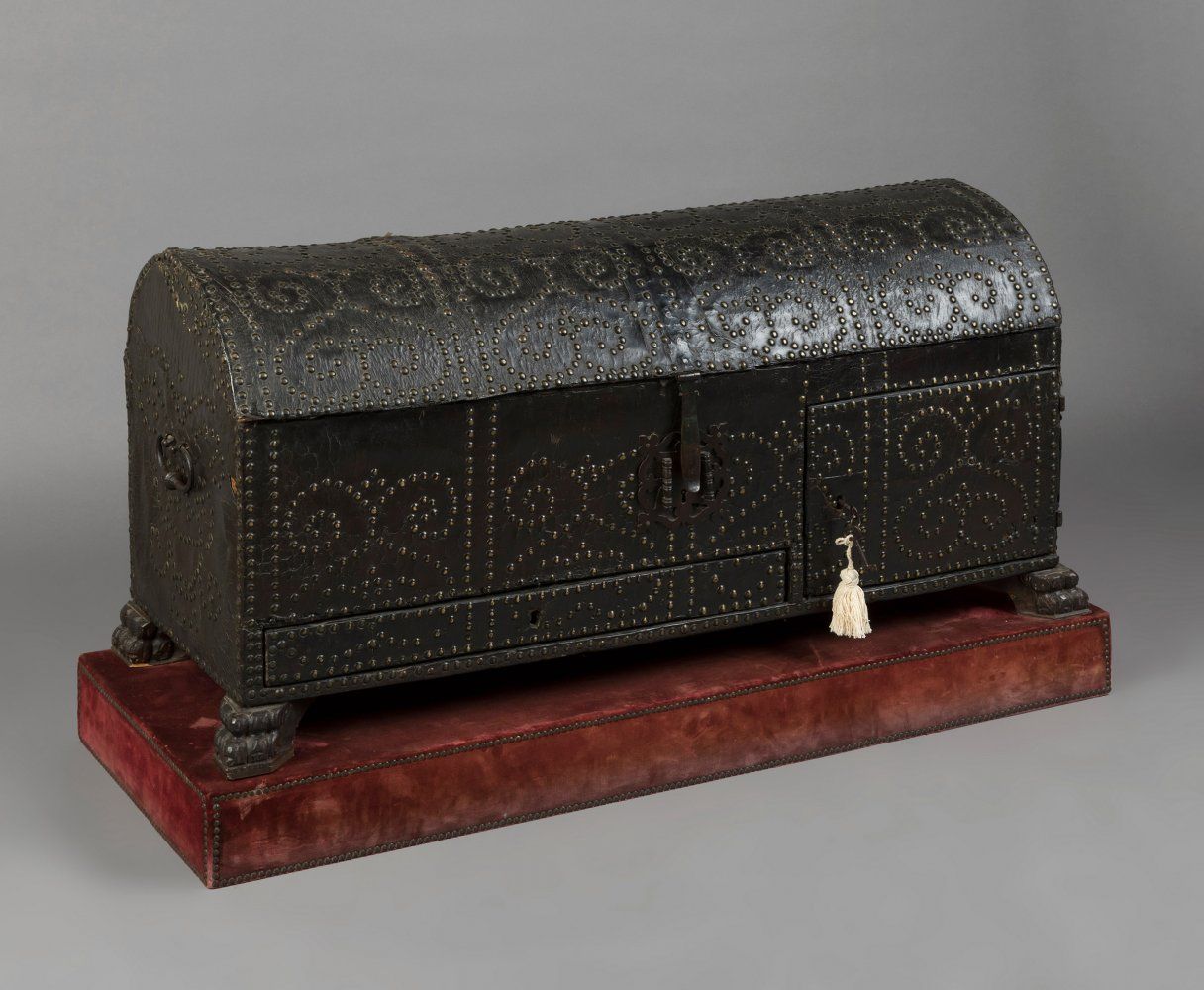Description
Spanish chest, 17th century. Wood upholstered in leather. Cloth lined interior. Lock in good condition. The keys are preserved. Very good state of preservation. The cloth-lined base is slightly damaged on the sides. Measurements: 58 x 117 x 42 cm (chest); 70 cm (height with the chest closed and the pedestal); 100 cm (height with the chest open and the punishment). A Spanish chest from the Baroque period, with a domed lid and a rectangular body. Its wooden core is lined with leather and decorated with metal studding that depicts plant-inspired representations on the surface. It has metal fittings and iron side handles. It is raised on zoomorphic, synthesised legs. Its interior, lined with fabric, is divided into two parts and has four drawers on the sides and a fifth, wider drawer at the bottom. This type of furniture was very common in Spain and was often used to store objects of a certain value, such as clothes, crockery, etc. In the 17th century, walnut chests were very common in Castile in the Valladolid area, while in the more northerly areas they were usually made of chestnut. As a typology, two-key chests are predominant. Seventeenth-century Spanish furniture is characterised by its sobriety and the emergence of new typologies. Functionality was sought after over decoration, moving away from the pompous solutions of previous periods. During the reign of Philip III (1598-1621) we find a style still closely linked to the 16th century. There is a strong influence of the Escorial style, but with a greater tendency towards geometrisation and simplification of forms.
102
Spanish chest, 17th century. Wood upholstered in leather. Cloth lined interior. Lock in good condition. The keys are preserved. Very good state of preservation. The cloth-lined base is slightly damaged on the sides. Measurements: 58 x 117 x 42 cm (chest); 70 cm (height with the chest closed and the pedestal); 100 cm (height with the chest open and the punishment). A Spanish chest from the Baroque period, with a domed lid and a rectangular body. Its wooden core is lined with leather and decorated with metal studding that depicts plant-inspired representations on the surface. It has metal fittings and iron side handles. It is raised on zoomorphic, synthesised legs. Its interior, lined with fabric, is divided into two parts and has four drawers on the sides and a fifth, wider drawer at the bottom. This type of furniture was very common in Spain and was often used to store objects of a certain value, such as clothes, crockery, etc. In the 17th century, walnut chests were very common in Castile in the Valladolid area, while in the more northerly areas they were usually made of chestnut. As a typology, two-key chests are predominant. Seventeenth-century Spanish furniture is characterised by its sobriety and the emergence of new typologies. Functionality was sought after over decoration, moving away from the pompous solutions of previous periods. During the reign of Philip III (1598-1621) we find a style still closely linked to the 16th century. There is a strong influence of the Escorial style, but with a greater tendency towards geometrisation and simplification of forms.
